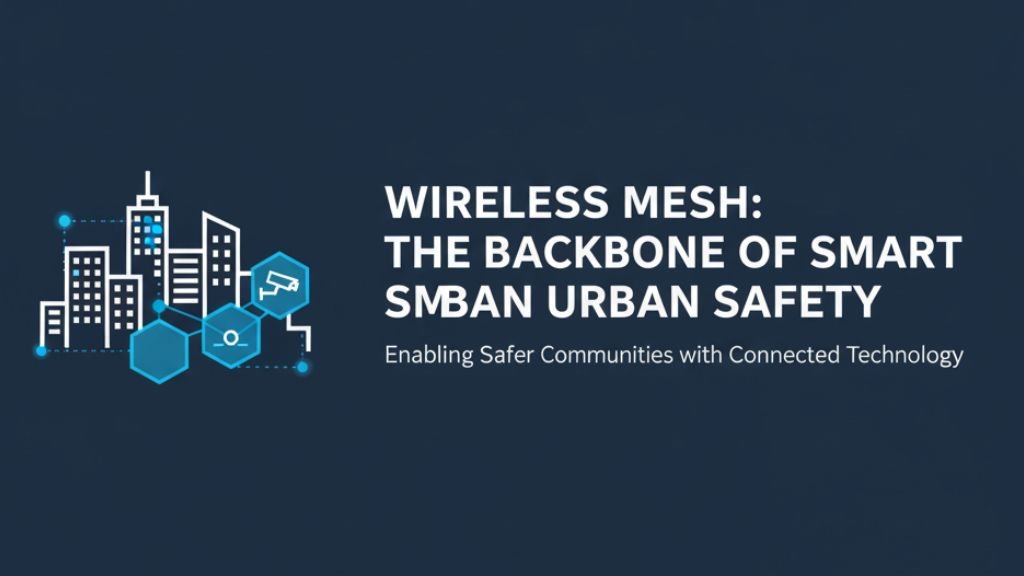In today’s rapidly growing cities, public safety is a top priority. From monitoring crowded intersections to protecting critical infrastructure, video surveillance systems play a crucial role in preventing and responding to emergencies. But traditional wired networks or single-point wireless solutions often struggle to provide the coverage, flexibility, and reliability that modern surveillance demands.
This is where wireless mesh networks come in. By connecting cameras, sensors, and monitoring hubs across multiple nodes, mesh technology ensures continuous coverage—even in challenging urban landscapes.
Why Mesh Networks Are Ideal for Video Surveillance
Urban areas pose unique challenges for surveillance systems. Buildings, traffic, and unpredictable environments often disrupt connectivity. Mesh networks overcome these obstacles by:
-
Providing Reliable Coverage: Each node communicates with the others, ensuring redundancy if one link fails.
-
Supporting High-Bandwidth Needs: Streaming HD video from multiple cameras requires strong throughput—something mesh systems handle well.
-
Scalability and Flexibility: As cities expand or new hotspots emerge, mesh nodes can be added without major infrastructure changes.
For municipalities and public safety agencies, adopting a public safety mesh network is not just about better connectivity; it’s about enabling faster response times and safer communities.
Key Use Cases in Urban Environments
-
Traffic Management
Mesh-connected cameras at intersections can monitor congestion, accidents, or violations, helping city authorities respond quickly. -
Event Monitoring
During concerts, festivals, or political gatherings, mobile mesh units can provide temporary surveillance coverage for large crowds. -
Critical Infrastructure Protection
Bridges, water plants, and power stations can be monitored through IP cameras integrated into the mesh network. -
Law Enforcement and First Responders
Real-time video feeds allow police, fire, and EMS teams to coordinate more effectively during emergencies.
For more insights on how wireless mesh powers citywide safety initiatives, explore our Public Safety solutions.
Challenges to Consider
While the benefits are significant, deploying video surveillance over mesh does come with challenges:
-
Bandwidth Management: High-definition video consumes a lot of bandwidth; proper planning is essential.
-
Security Concerns: Public safety data must be encrypted and protected from cyber threats.
-
Interference Issues: Dense urban environments can cause RF interference, requiring intelligent channel planning.
With the right design and technology, these challenges can be mitigated, making mesh an essential backbone for modern surveillance.
Looking Ahead
As cities become smarter, integrating AI-powered analytics and IoT devices with mesh-based video surveillance will unlock even greater potential. From predictive policing to environmental monitoring, mesh networks are at the heart of safer, smarter urban living.
To see how this technology is transforming communities, check out our Public Safety page.
FAQs
1. Why are mesh networks better than traditional wireless for surveillance?
Mesh networks provide redundancy, self-healing capabilities, and high throughput, ensuring surveillance systems stay online even if one node fails.
2. Can mesh support high-definition video from multiple cameras?
Yes. With proper bandwidth planning, mesh networks can handle HD and even 4K video streams across multiple nodes.
3. Is mesh surveillance only for large cities?
Not at all. Municipalities, campuses, and even industrial sites use mesh networks for scalable and reliable surveillance solutions.
